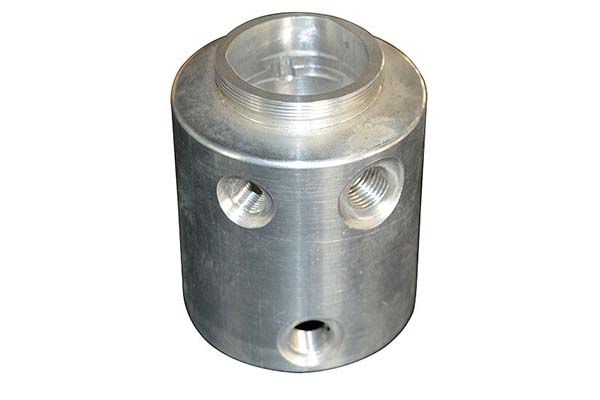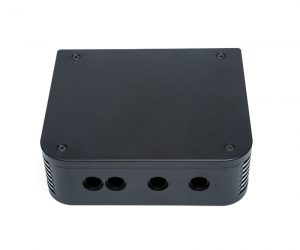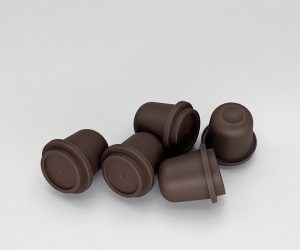1. Introduction
1.1 Definition of Multi - Axis Machining
In the realm of modern manufacturing, multi - axis machining has emerged as a revolutionary technology, significantly transforming the production landscape. Multi - axis machining is an advanced manufacturing process that makes use of Computer Numerical Control (CNC) machines. These machines are engineered to move simultaneously in multiple directions, typically three or more axes.
In a traditional machining setup, a 3 - axis CNC machine can move along the X, Y, and Z linear axes. This allows for basic milling, drilling, and turning operations on a workpiece. However, multi - axis machining expands these capabilities. For example, a 4 - axis machine adds a rotational axis (either A or B), which enables the workpiece or the tool to rotate around one of the linear axes. This extra degree of freedom permits more complex operations, such as machining tapered surfaces or creating holes at an angle.
A 5 - axis machine takes it a step further, with two additional rotational axes. Yigu Technology allows for the most intricate and complex machining tasks. The workpiece can be rotated and tilted in multiple directions while the cutting tool moves along the linear axes. As a result, 5 - axis machines can produce highly complex parts with intricate geometries in a single setup. For instance, in the aerospace industry, 5 - axis machining is used to create turbine blades with complex curved surfaces that are crucial for efficient engine performance.
To illustrate the concept further, consider a simple cube - shaped workpiece. With a 3 - axis machine, we can only machine flat surfaces parallel to the X, Y, and Z axes. But with a 5 - axis machine, we can access all sides of the cube from various angles, creating curved surfaces, angled holes, and complex contours without the need to re - position the workpiece multiple times.
2. Key Benefits of Multi - Axis Machining
2.1 Increased Efficiency and Productivity
2.1.1 Reducing Setup and Cycle Times
One of the most significant advantages of multi - axis machining is its ability to reduce setup and cycle times. In traditional machining, a workpiece often needs to be re - positioned and clamped multiple times to complete different operations. Each re - positioning requires careful alignment and adjustment, which can be time - consuming. For example, in the production of automotive engine components, traditional 3 - axis machining might require separate setups for milling different surfaces, drilling holes, and tapping threads.
However, Yigu Technology multi - axis machining allows for multiple operations to be carried out in a single setup. A 5 - axis CNC machine can rotate the workpiece and the cutting tool simultaneously, enabling it to access different surfaces without the need for re - clamping. This not only saves the time spent on setup but also reduces the risk of errors associated with re - positioning. According to industry data, multi - axis machining can reduce setup times by up to 50% compared to traditional 3 - axis machining.
Moreover, the reduction in tool changes also contributes to shorter cycle times. With multi - axis machines, a single tool can perform multiple operations, eliminating the need to stop the machine and change tools frequently. This continuous operation significantly speeds up the production process. For instance, in the manufacturing of complex brackets for industrial equipment, multi - axis machining can complete all the necessary milling, drilling, and chamfering operations in one go, reducing the overall cycle time by 30 - 40%.
2.1.2 Streamlining Complex Part Production
Multi - axis machining is particularly well - suited for producing complex parts. Complex parts often have intricate geometries, such as curved surfaces, angled holes, and undercuts, which are difficult to manufacture using traditional machining methods. In traditional machining, multiple steps and setups are usually required to create these complex features, which can be time - consuming and may also introduce errors.
2.2 Improved Accuracy and Precision
2.2.1 Tight Tolerance Capabilities
Multi - axis machining offers exceptional accuracy and the ability to achieve tight tolerances. The simultaneous movement of multiple axes allows for precise control over the cutting tool's position and orientation relative to the workpiece. This level of control is essential in industries such as aerospace, medical, and electronics, where components must meet extremely strict dimensional requirements.
In the aerospace industry, for example, parts such as turbine disks and compressor blades need to be manufactured with tolerances in the range of a few micrometers. Multi - axis machining can consistently achieve these tight tolerances. The machine's advanced control system can precisely calculate and execute the movements required to create the complex shapes and features of these parts with high accuracy. This ensures that the components fit together perfectly and function optimally within the engine, enhancing its performance and reliability.
2.2.2 Minimizing Human Error
Another advantage of multi - axis machining in terms of accuracy is its ability to minimize human error. Since the machining process is automated and controlled by a computer program, there is less room for human - induced errors compared to traditional machining methods that rely heavily on manual operation.
2.3 Reduced Setup Time and Labor Costs
2.3.1 Fewer Manual Adjustments
Yigu Technology Multi - axis machining significantly reduces the need for manual adjustments during the manufacturing process. In traditional machining, operators often have to manually adjust the position of the workpiece, the cutting tool, or the machine settings between operations. These manual adjustments can be time - consuming and require a high level of skill and attention from the operator.
For example, in the production of molds, traditional machining might involve multiple setups and manual adjustments to machine different features of the mold. Each adjustment requires the operator to measure, align, and fine - tune the machine to ensure accurate machining. However, with multi - axis machining, the entire mold can be machined in a single setup with minimal manual intervention. The machine's computer - controlled axes can automatically position the cutting tool and the workpiece, eliminating the need for most of the manual adjustments.
2.3.2 Lower Labor Intensity
In addition to reducing the need for manual adjustments, multi - axis machining also lowers the labor intensity for operators. With traditional machining methods, operators may need to stand by the machine for long periods, constantly monitoring and adjusting the machining process. This can be physically and mentally exhausting, especially for long production runs.
However, multi - axis machines are highly automated, allowing operators to oversee multiple machines simultaneously. Once the machining program is set up and the machine is running, the operator can focus on other tasks, such as quality control, tool management, or programming for the next job. This not only improves the productivity of the operator but also reduces the overall labor requirements for the manufacturing process.
2.4 Enhanced Part Quality and Finish
2.4.1 Smooth Surface Finishes
Multi - axis machining is capable of producing parts with smooth surface finishes, which is highly desirable in many industries. The ability to control the movement of the cutting tool precisely along multiple axes allows for a more uniform removal of material, resulting in a smoother surface.
In the automotive industry, for example, parts such as engine blocks, cylinder heads, and transmission components require smooth surface finishes to ensure proper functioning and reduced friction. Multi - axis machining can achieve surface finishes with roughness values as low as Ra 0.1 - 0.5 micrometers, which is significantly better than what can be achieved with traditional machining methods. This smooth surface finish not only improves the performance of the parts but also extends their lifespan.
2.4.2 Intricate Geometries Made Possible
Multi - axis machining enables the creation of parts with intricate geometries that are difficult or impossible to produce using traditional machining methods. The additional axes of movement allow the cutting tool to reach and machine areas of the workpiece that are otherwise inaccessible.
For example, in the medical field, custom - designed prosthetics and surgical instruments often require complex geometries to fit the patient's unique anatomy or to perform specific surgical procedures. Multi - axis machining can produce these intricate shapes with high precision, ensuring a perfect fit and optimal functionality. A study in the medical device manufacturing industry showed that multi - axis machining increased the success rate of custom - made prosthetics by 20 - 30% due to its ability to accurately replicate the patient's anatomy.
3. Comparison with Traditional Machining
3.1 Tabular Comparison
To better illustrate the advantages of multi - axis machining, let Yigu Technology compare it with traditional machining methods in a tabular format across several key aspects:
| Aspect | Traditional Machining | Multi - Axis Machining |
| Efficiency | Multiple setups are often required, leading to longer setup times. Frequent tool changes and manual adjustments slow down the production process. For simple parts, the cycle time might be relatively short, but for complex parts, it can be significantly extended. | Reduces setup times by up to 50% as multiple operations can be done in a single setup. Minimizes tool changes, and continuous operation reduces cycle times by 30 - 40% for complex parts. |
| Accuracy | Limited by manual operation and the need for multiple setups, which may introduce alignment errors. Tight tolerances are difficult to achieve consistently, especially for complex geometries. | Can achieve tight tolerances in the range of a few micrometers. Minimizes human error due to automation, resulting in highly accurate and consistent parts. |
| Cost - Labor | High labor costs due to the need for skilled operators to perform multiple manual adjustments and monitor the machining process. Labor intensity is high as operators may need to be present throughout the process. | Reduces labor costs by 30 - 40% as fewer manual adjustments are required and operators can oversee multiple machines. Lower labor intensity allows for better utilization of operator time. |
| Cost - Equipment | Initial equipment cost may be lower for basic machines, but for complex operations, multiple machines may be needed, increasing overall investment. Maintenance costs can be high due to frequent wear and tear from manual operation. | Higher initial equipment cost, but the ability to perform multiple operations in one machine can reduce the need for additional equipment. Lower maintenance costs per part as the machine operates more efficiently and has fewer breakdowns related to manual intervention. |
| Part Quality - Surface Finish | Surface finishes may be rougher, especially for complex parts. Achieving a smooth surface often requires additional finishing operations. | Can achieve surface finishes with roughness values as low as Ra 0.1 - 0.5 micrometers, eliminating the need for many additional finishing operations. |
| Part Quality - Geometric Complexity | Limited to producing simple geometries. Complex parts often require multiple machines and setups, which may lead to inaccuracies. | Capable of producing highly complex geometries in a single setup, ensuring the integrity and accuracy of the part's design. |
4. Conclusion
In Yigu Technology summary, multi - axis machining offers a plethora of benefits that have a profound impact on the manufacturing industry. In terms of efficiency and productivity, it revolutionizes the production process. By enabling multiple operations to be carried out in a single setup, multi - axis machining reduces setup times by up to 50% and shortens cycle times for complex parts by 30 - 40%. This streamlining effect is crucial for both small - scale prototyping and large - scale mass production, allowing manufacturers to meet tight deadlines and increase output.
The accuracy and precision of Yigu Technology multi - axis machining are truly remarkable. It can achieve tight tolerances in the range of a few micrometers, which is essential for industries where component performance and reliability are of utmost importance, such as aerospace, medical, and electronics. The automation of the machining process minimizes human error, ensuring consistent and high - quality results.
Cost - savings is another significant advantage. Reduced setup time and fewer manual adjustments lead to lower labor costs, with a potential reduction of 30 - 40% in labor expenses. Additionally, the ability to perform multiple operations on a single machine can decrease the need for additional equipment, lowering overall production costs in the long run.
In terms of part quality, multi - axis machining excels in producing parts with smooth surface finishes, achieving roughness values as low as Ra 0.1 - 0.5 micrometers, and enabling the creation of intricate geometries that are difficult or impossible to produce with traditional machining methods. This results in parts that not only meet the highest functional requirements but also have an aesthetic appeal, which is particularly important in industries like automotive and consumer products.
Overall, multi - axis machining has become an indispensable technology in modern manufacturing. Its ability to enhance efficiency, precision, cost - effectiveness, and part quality makes it a game - changer for manufacturers across various industries. As technology continues to advance, we can expect multi - axis machining to play an even more significant role in driving innovation and competitiveness in the global manufacturing landscape.


